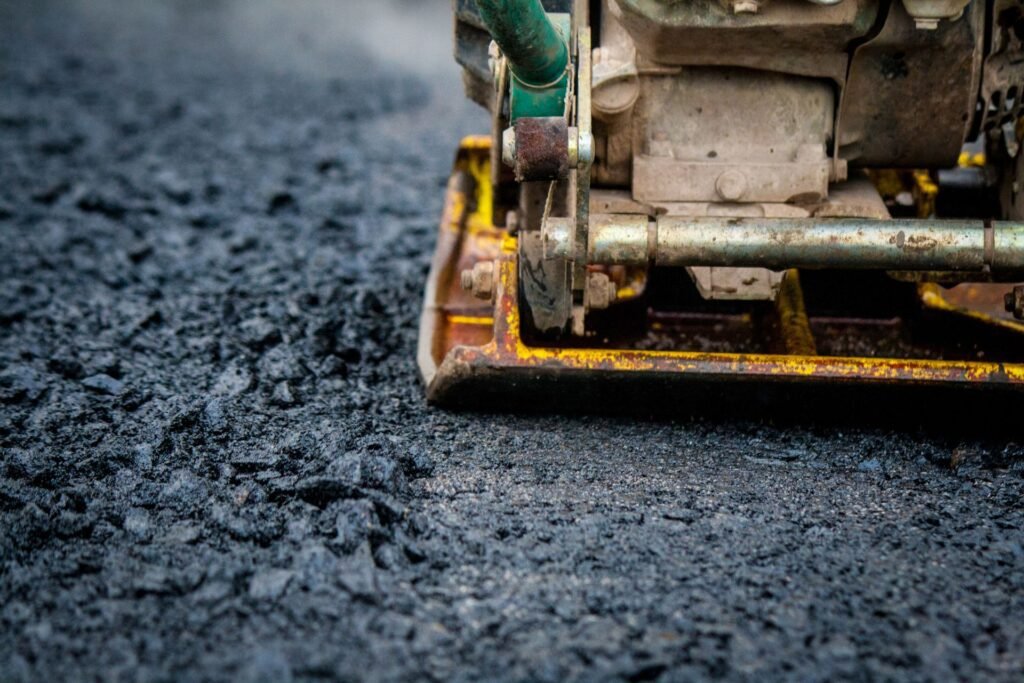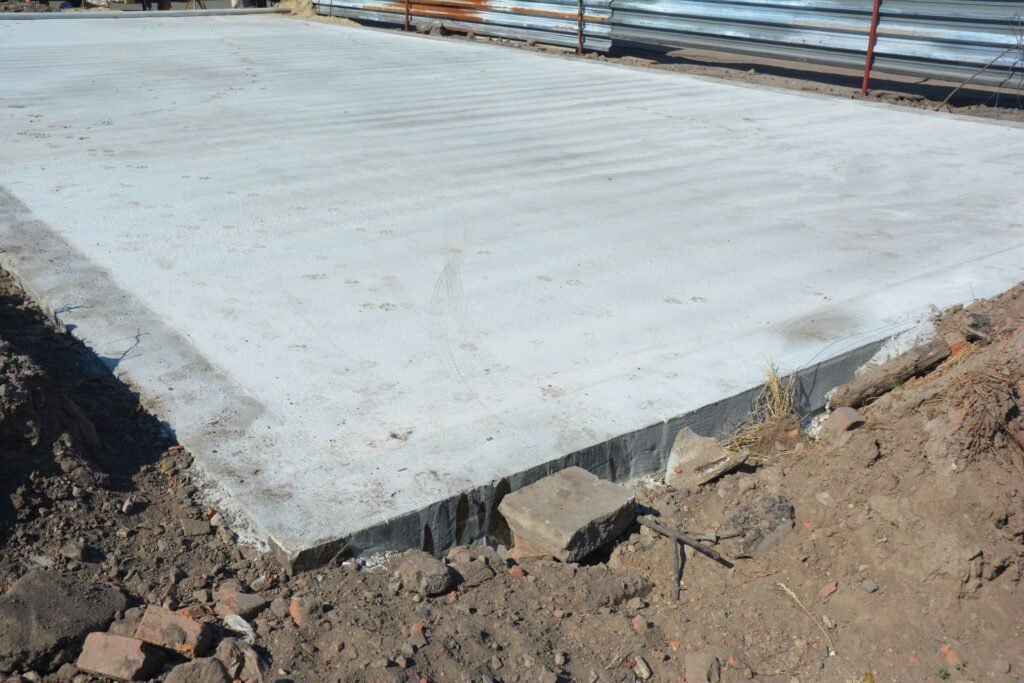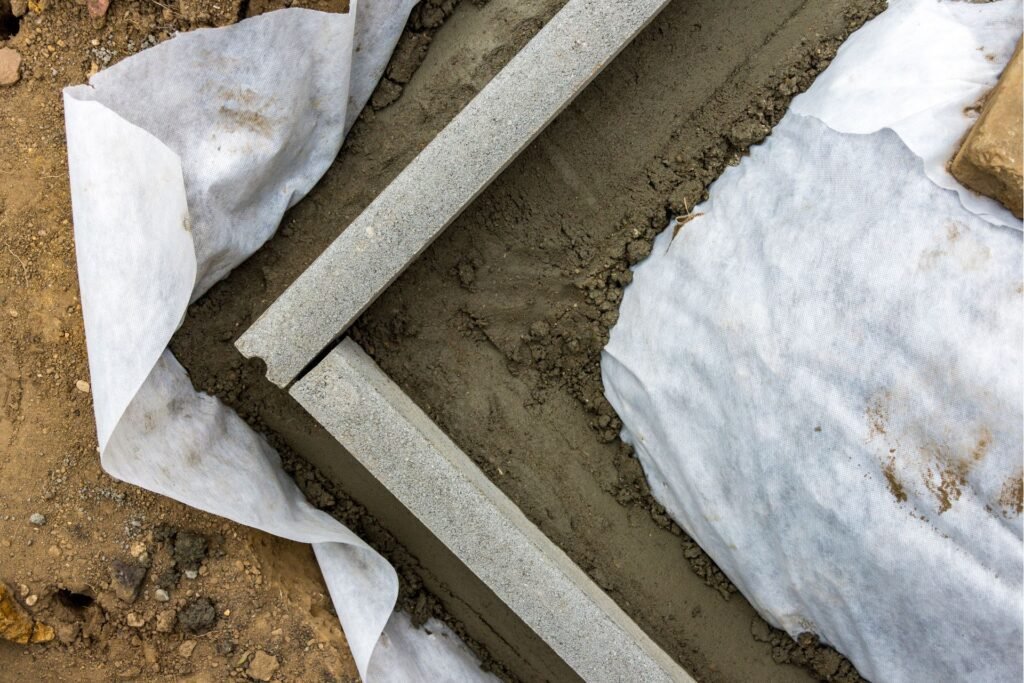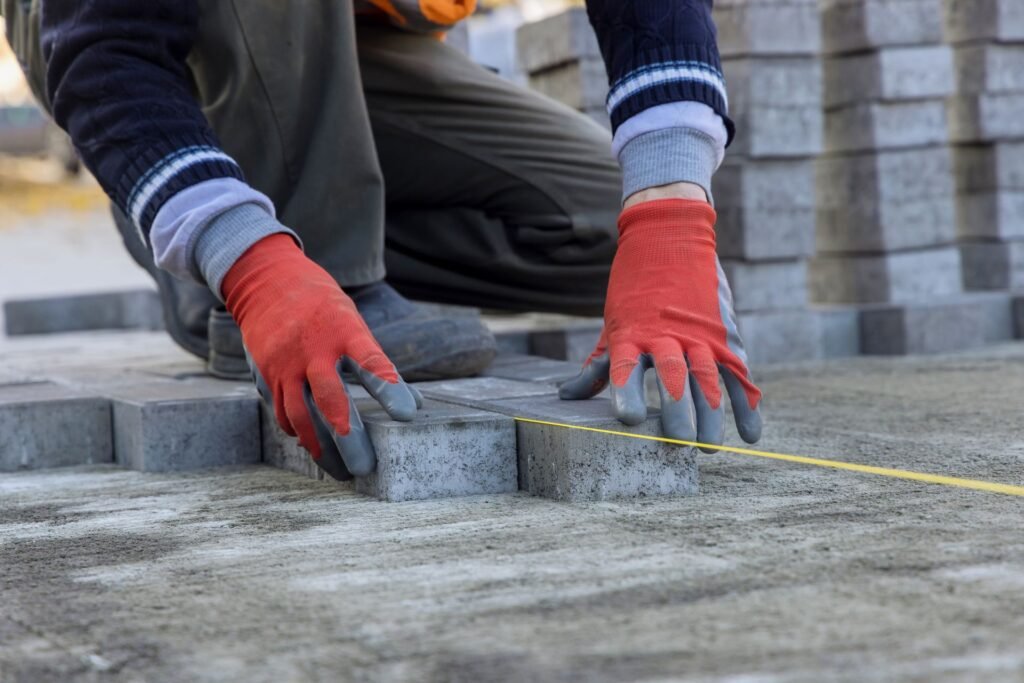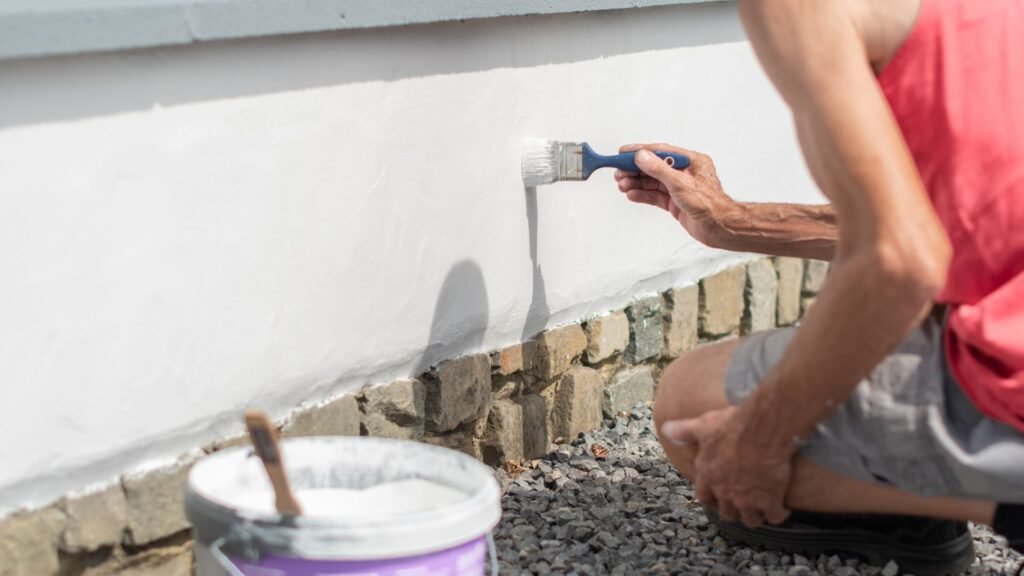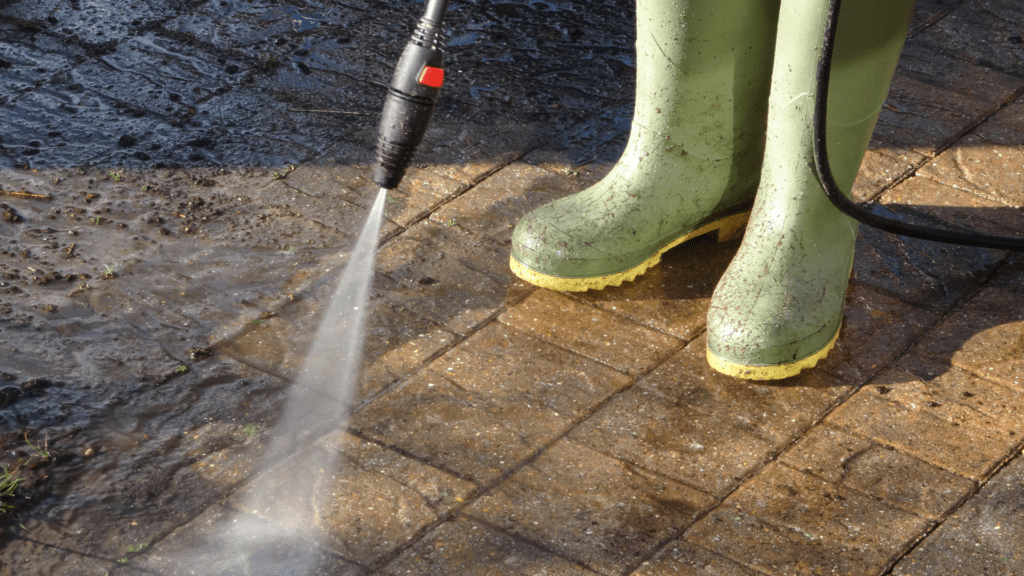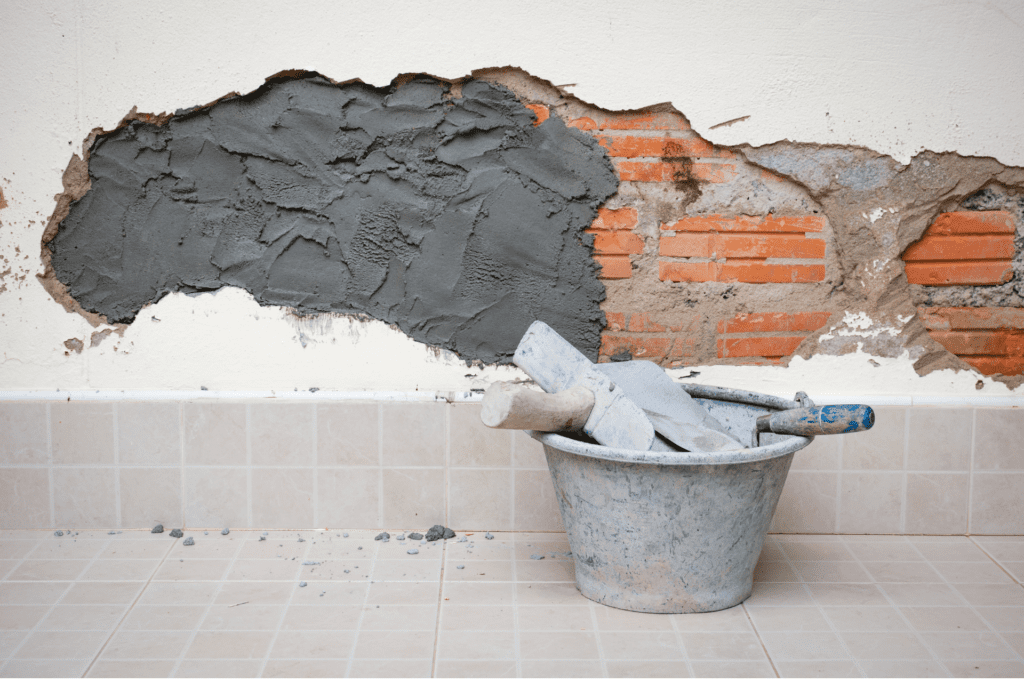Welcome to your comprehensive guide on council rules for driveways in New Zealand! Whether you’re planning to build a new driveway or modify an existing one, it’s essential to understand the regulations that apply to ensure your project is compliant and hassle-free. In this post, we’ll break down everything you need to know from the permits required and design standards, to drainage requirements and common mistakes to avoid so that you can confidently navigate the process. By following these guidelines, you’ll not only meet council expectations but also create a safe, functional, and durable driveway for your property.
In New Zealand, council rules for driveways require homeowners to obtain permits for new driveways or significant modifications. Key regulations cover driveway placement, width, gradient, and drainage to ensure safety and proper infrastructure management. It’s essential to follow local council guidelines to avoid fines and ensure compliance.
Table of Contents
Why Are There Council Rules For Driveways
Driveways may seem like a straightforward part of any property, but they can have a big impact on the surrounding area. That’s why local councils have specific regulations in place to ensure that driveways are designed, built, and maintained with the broader community in mind. These rules aren’t just about aesthetics; they address critical concerns such as safety, infrastructure, and environmental management. Here’s an in-depth look at why councils regulate driveways and what considerations they take into account.
Ensuring Safety and Infrastructure Integrity
Councils are responsible for maintaining public spaces, infrastructure, and safety. Driveways are part of the connection between private property and public roads, so they have to be carefully regulated. Without proper guidelines, a poorly designed driveway can cause issues for both property owners and the public. Councils aim to ensure that driveways.
- Enhance safety for road users and pedestrians: A well-placed and properly constructed driveway reduces risks of accidents. For instance, a driveway that provides clear visibility for drivers entering or exiting a property is crucial in preventing traffic incidents.
- Prevent damage to public infrastructure: Driveways intersect with roads, footpaths, and drainage systems. If not designed properly, a driveway can damage nearby infrastructure like kerbs, pavements, or underground utilities. Council regulations ensure that this critical infrastructure is protected during and after driveway construction.
- Maintain neighborhood aesthetics: The appearance of driveways can affect the overall look of a street or neighborhood. Councils often set guidelines on the materials, size, and design of driveways to ensure that they blend in with the surrounding environment, maintaining a cohesive and tidy streetscape.
Key Considerations in Council Driveway Regulations
Councils don’t just impose rules for the sake of it; their regulations are based on several important factors that affect both individual properties and the broader community. Here are the key considerations.
- Traffic Safety: Safety is often the top priority. Driveways that are poorly located can obstruct the view of drivers on public roads, creating blind spots and increasing the likelihood of collisions. Additionally, if a driveway is too steep or close to an intersection, it can create dangerous conditions. By regulating where and how driveways are built, councils help minimize these risks.
- Pedestrian Access: Pedestrian safety is another crucial consideration. Driveways that cross footpaths or are near high-traffic pedestrian areas need to be carefully managed to avoid accidents. Councils may require driveways to have specific features like clear visibility, proper signage, or gentle slopes to ensure that pedestrians, especially those with limited mobility, can safely navigate the area.
- Managing Water Runoff: Driveways can contribute to stormwater issues if they are not properly constructed. Rainwater that cannot soak into the ground due to a paved driveway may flow onto public roads, leading to flooding or erosion problems. Councils enforce drainage guidelines to ensure that driveways are built in a way that manages water runoff effectively, protecting both private properties and public infrastructure from water damage.
- Environmental and Aesthetic Impact: A driveway’s appearance can impact the overall character of a neighborhood. Councils often encourage the use of materials and designs that are in line with the local aesthetic, preserving the visual harmony of the area. They may also encourage eco-friendly designs, such as permeable driveway surfaces, which allow rainwater to seep into the ground rather than contributing to runoff issues.
In short, council rules for driveways are in place to protect both the public and the private interests of property owners. By ensuring that driveways are safe, environmentally friendly, and aesthetically pleasing, councils help create safer, more attractive neighborhoods. So, while it might seem like a hassle to comply with driveway regulations, these rules serve an important purpose in maintaining the well-being and harmony of the community.

Do I Need A Permit For My Driveway
When planning any changes to your driveway, understanding whether or not you need a permit is crucial. Whether you’re constructing a new driveway or modifying an existing one, specific guidelines are typically set by local regulations. Below, we’ll outline when a permit is necessary, how to apply for one, and what costs you should expect.
When Permits Are Required
In most cases, you’ll need a permit if you’re planning to build a new driveway or make significant changes to your current one. This includes adjustments to the size, shape, or surface material of the driveway. Even relocating the driveway to another spot on your property will usually require approval from your local authorities.
Typical situations requiring a permit.
- Building a brand-new driveway on your property.
- Widening or narrowing an existing driveway.
- Changing the surface material (e.g., switching from gravel to concrete).
- Altering the driveway’s drainage system.
- Relocating the driveway’s entrance or exit points.
Keep in mind, these requirements can vary depending on where you live. Some municipalities may have more lenient guidelines, while others enforce stricter rules to ensure that driveways meet safety and environmental standards.
How to Apply for a Driveway Permit
Applying for a driveway permit is a straightforward process, but it’s important to gather all the necessary documentation before you begin. Here’s a step-by-step guide to help you navigate the process.
- Contact Your Local Building Department: The first step is to reach out to your local building or planning department to confirm the specific requirements for driveway permits in your area.
- Prepare Your Site Plan: Most municipalities require a detailed site plan when submitting a driveway permit application. This plan should include:
- The location of the driveway in relation to your property and any nearby roads.
- Measurements of the proposed driveway, including length and width.
- Information on the materials you plan to use (e.g., asphalt, concrete, gravel).
- Drainage details to ensure proper water runoff and avoid flooding issues.
- Submit Your Application: Once your site plan and other required documents are ready, you can submit them to your local building authority, either online or in person. Make sure your application is complete to avoid delays.
- Schedule an Inspection (if required): In some cases, your local authorities may require an inspection before the permit is granted. This ensures that the proposed changes to the driveway meet all safety and zoning regulations.
Associated Costs
When applying for a driveway permit, it’s essential to factor in potential costs. These fees can vary widely depending on your location and the complexity of the project.
- Permit Fees: Permit costs generally range from $50 to $200, but they could be higher for larger or more complex driveways.
- Inspection Fees: Some municipalities may also require you to pay for an inspection, which could add another $50 to $100 to your budget.
- Additional Costs: If your driveway project involves extensive modifications, such as drainage system upgrades or significant grading work, you may need to budget for additional costs related to engineering plans or professional services.
By planning ahead and ensuring you follow the proper steps, obtaining a permit for your driveway project can be a smooth process. Always double-check with your local authorities to ensure you’re meeting all the necessary requirements before starting your project.
This comprehensive guide should help you understand when and why a driveway permit is required, how to apply for it, and the associated costs, allowing you to approach your project with confidence and peace of mind.
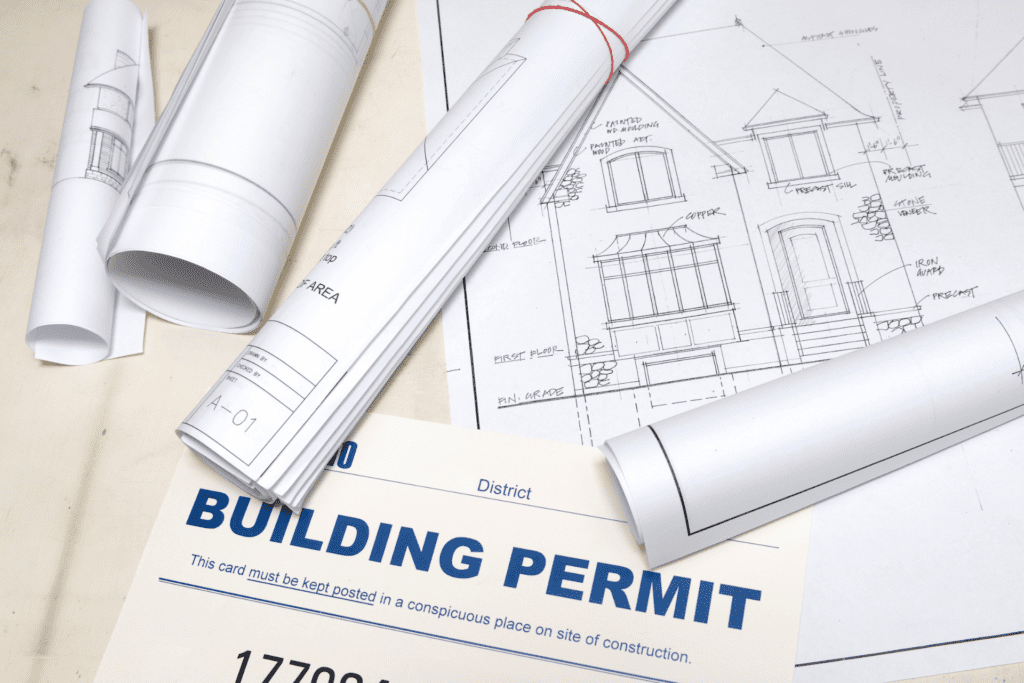
Driveway Placement And Design Standards
A well-designed driveway not only improves your property’s functionality but also plays a crucial role in maintaining road safety and ensuring compliance with local regulations. In New Zealand, driveway placement and design are governed by strict standards to prevent traffic hazards, ensure smooth access, and manage environmental impacts like water runoff. Here’s a breakdown of the key rules and requirements you need to be aware of.
Ensuring Road Safety and Functionality
The placement of your driveway in relation to public roads, boundaries, and intersections is critical. Proper driveway placement helps avoid potential traffic issues, minimizes risks, and ensures safe access to your property.
In New Zealand, driveway placement must adhere to local council regulations, which typically include maintaining a safe distance from intersections, pedestrian crossings, and other driveways. This distance is crucial in preventing traffic hazards like reduced visibility or bottlenecks, which can increase the risk of accidents.
For example, driveways that are too close to intersections can obstruct the sightlines of both pedestrians and drivers, making it difficult to see oncoming traffic. Therefore, placing a driveway too near a corner or busy road can lead to dangerous situations. Your local council will specify the minimum distance allowed from intersections and road crossings, and it’s important to consult these guidelines before finalizing your driveway location. In addition, keeping driveways away from nearby property boundaries and neighboring driveways ensures smoother traffic flow and reduces potential conflicts with other road users.
Driveway Width and Gradient
Driveway width and slope are regulated to ensure safe and efficient vehicle access. These standards vary based on whether the driveway serves a residential or commercial property, as well as the number of vehicles that need accommodation.
For residential driveways, the typical width ranges from 2.5 to 5.5 meters, depending on the number of vehicles and the type of property. A single-car driveway will usually require the narrower end of this range, while multi-car or shared driveways may need to be closer to 5.5 meters wide. It’s important to consider the width carefully, as a driveway that is too narrow can make it difficult to maneuver vehicles, especially in cases where larger vehicles like SUVs or trucks are used. The driveway gradient (or slope) is also regulated to ensure vehicles can safely access your property without risk of scraping or getting stuck. Most councils specify a maximum slope for driveways to prevent safety issues during wet or icy conditions. For example, a steep driveway may cause vehicles to slip, especially if not properly maintained. The slope should allow for easy vehicle entry and exit, particularly for driveways connecting to busy roads.
For commercial properties, driveways generally need to be wider and sturdier to handle increased traffic and larger vehicles, such as delivery trucks. Commercial driveways typically have stricter standards for both width and gradient, so business owners should be aware of these regulations when designing a driveway for their premises.
Materials and Drainage Requirements: Selecting Durable Materials and Managing Water Runoff
Choosing the right materials for your driveway is an essential aspect of both the functionality and appearance of your property. In New Zealand, commonly used driveway materials include concrete, asphalt, and gravel. Each material has its own benefits and considerations in terms of durability, cost, and maintenance.
- Concrete: A popular choice due to its strength and low maintenance requirements, concrete provides a smooth surface that can withstand heavy use. It’s ideal for both residential and commercial driveways.
- Asphalt: Known for its flexibility and quick installation, asphalt is also a durable option but may require more frequent maintenance than concrete, especially in regions with high temperatures or heavy rainfall.
- Gravel: Often used in rural areas or for long driveways, gravel is an affordable and permeable material that allows water to seep through the ground. However, it may require regular replenishment and grading to maintain a smooth surface.
In addition to selecting materials, it’s important to consider how your driveway will manage water runoff. New Zealand councils typically require driveways to have proper drainage systems to prevent flooding or water damage to surrounding areas. Without proper drainage, runoff from your driveway can flow onto the road, creating hazards for drivers and pedestrians, or it can spill onto neighboring properties, leading to disputes and potential legal issues.
To meet council standards, homeowners and developers must ensure that driveways are designed with adequate drainage solutions, such as permeable paving materials, drainage channels, or soak pits. These measures help absorb and divert water away from the driveway and surrounding structures. Failing to comply with these requirements can result in fines or the need to redo the driveway at significant cost. Designing a driveway that meets local regulations and standards is essential for ensuring both safety and longevity. Proper placement, appropriate width and gradient, and the right choice of materials combined with effective drainage systems will not only improve access to your property but also protect against potential hazards and environmental issues. Before starting construction, always consult with your local council or a professional to ensure that your driveway design complies with New Zealand’s driveway placement and design standards. By doing so, you’ll avoid costly mistakes and create a functional, durable, and aesthetically pleasing addition to your property.

Driveways And Council Infrastructure
Impact on Footpaths, Curb Cuts, and Stormwater Drains
When planning to build or renovate a driveway, it’s essential to understand how it interacts with public infrastructure, including footpaths, curbs, and stormwater systems. Driveways often intersect with these elements, and this can affect the surrounding area in several ways. Local councils regulate these interactions to ensure safety, longevity, and environmental sustainability.
For instance, when constructing a driveway, you may need to modify the footpath or create a curb cut. A curb cut involves lowering the curb to allow vehicle access from the street to your property. However, this process isn’t as simple as it seems it requires council approval. Councils enforce strict guidelines to ensure that any modifications are both structurally sound and safe for pedestrians and drivers. Poorly constructed curb cuts or footpath alterations can lead to issues like uneven surfaces, which pose risks to foot traffic, or damage to underground utilities.
Additionally, stormwater drains must be considered when planning your driveway. Impermeable surfaces, such as concrete or asphalt, can increase stormwater runoff, potentially overwhelming local drainage systems. Councils often require that driveways include proper drainage solutions to manage water flow and prevent flooding or erosion.
The approval process generally involves submitting detailed plans that comply with local regulations. Councils assess factors such as safety, durability, and environmental impact before granting permission. Ensuring that your driveway installation is up to council standards is crucial, as failure to comply can result in fines or costly repairs down the road.
Shared Driveways and Right of Way
Shared driveways are common in urban and semi-urban areas, where space is at a premium and multiple properties may share access to a single lane. While shared driveways can be a practical solution for providing access to multiple homes, they come with their own set of challenges, particularly around rights of way, maintenance responsibilities, and council regulations.
When you share a driveway with neighbors, it’s essential to establish clear agreements on access and maintenance. A right of way is a legal term that grants one party the right to pass through the property of another. In the case of shared driveways, it’s crucial to have a formal agreement that outlines each party’s rights and obligations. This helps prevent disputes over usage or upkeep, which can become a significant source of tension among neighbors.
Councils may also have specific regulations for shared driveways, particularly regarding width, surface material, and drainage. These standards ensure that the driveway is wide enough for safe vehicle access and that it doesn’t negatively impact surrounding properties or public infrastructure. In some cases, councils may require that shared driveways be formally registered on the property title to ensure that access rights are clear and legally enforceable.
By following council guidelines and maintaining open communication with neighbors, you can avoid common pitfalls associated with shared driveways. Proper planning and adherence to local regulations will not only preserve good neighborly relations but also help maintain property values and ensure safe, hassle-free access for everyone involved.
Whether you’re modifying a curb for a new driveway or navigating the complexities of a shared access road, it’s vital to understand the role of local councils in regulating driveway construction and infrastructure impact. Proper planning, council approvals, and clear agreements with neighbors will ensure that your driveway project proceeds smoothly and avoids potential legal or logistical issues.
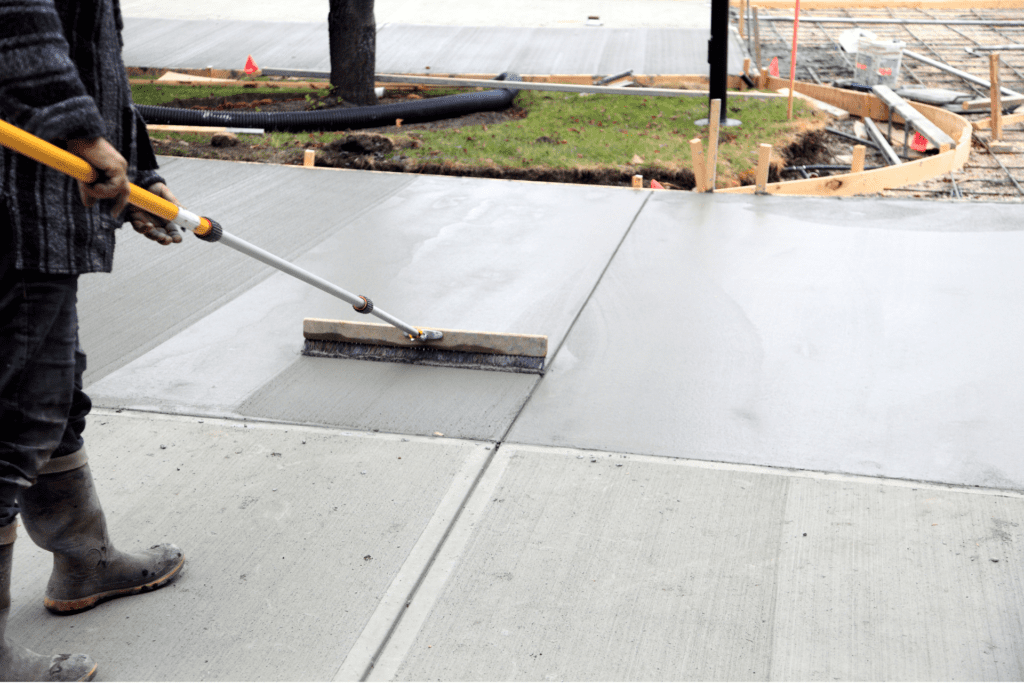
Common Mistakes To Avoid When Building A Driveway
When constructing a driveway, there are several pitfalls that homeowners often overlook. By avoiding these common mistakes, you can save yourself time, money, and unnecessary headaches down the road. Here’s a closer look at the critical errors you should steer clear of during the process
Skipping the Permit Process
One of the most significant errors homeowners make when building or modifying a driveway is skipping the permit process. Many people are unaware that most local councils or municipalities require permits for driveway construction, and ignoring this step can lead to severe consequences. Without the proper documentation, you could face hefty fines, or even worse, be ordered to demolish and rebuild the entire driveway.
Permits exist to ensure that the construction meets safety standards and does not negatively impact the surrounding community. By bypassing this step, not only do you risk legal repercussions, but you also run the risk of failing to meet safety and zoning regulations, which could lead to further complications down the line. Always check with your local authorities about the necessary permits before starting any driveway project. The small cost and time spent upfront can save you a lot of money and stress in the future.
Ignoring Placement Guidelines
Proper placement of your driveway is more than just an aesthetic consideration; it’s a matter of safety and functionality. Ignoring placement guidelines can result in various issues, from decreased visibility for drivers to potential disputes with neighbors or the local council.
For instance, a poorly placed driveway could block access to essential services, such as rubbish collection routes or emergency vehicle access. It could also lead to accidents if it’s located too close to intersections or blind spots, endangering pedestrians and other drivers. Additionally, failing to adhere to boundary regulations could spark disputes with neighbors, especially if the driveway infringes on their property. Follow placement guidelines carefully to ensure your driveway doesn’t interfere with traffic flow, obstruct essential services, or create tension with neighbors. Always consult with professionals to ensure your driveway’s placement is optimal and complies with local regulations.
Improper Drainage Setup
A mistake that can lead to significant long-term damage is neglecting proper drainage when building a driveway. Stormwater management is crucial to prevent water from pooling on your property or overflowing into your neighbor’s yard. Improper drainage design can lead to flooding, soil erosion, and water damage to the foundation of your home.
Pooling water on your driveway not only shortens its lifespan by causing cracks and potholes, but it also increases the risk of accidents due to slippery surfaces. In more severe cases, poor drainage can flood your property or nearby land, resulting in expensive repairs and even legal disputes with neighbors over water damage. Plan for an effective drainage system to divert stormwater away from your property. This will help preserve the integrity of your driveway and avoid costly issues with water damage in the future. Consulting a professional engineer or contractor to design the drainage system is a smart investment.
Building a driveway involves more than just laying down asphalt or concrete. To avoid costly mistakes, it’s essential to secure the necessary permits, adhere to placement guidelines, and ensure proper drainage. These steps not only ensure the longevity of your driveway but also help you avoid legal issues, safety concerns, and potential conflicts with neighbors. By taking the time to do it right, you can create a driveway that is both functional and adds value to your property.
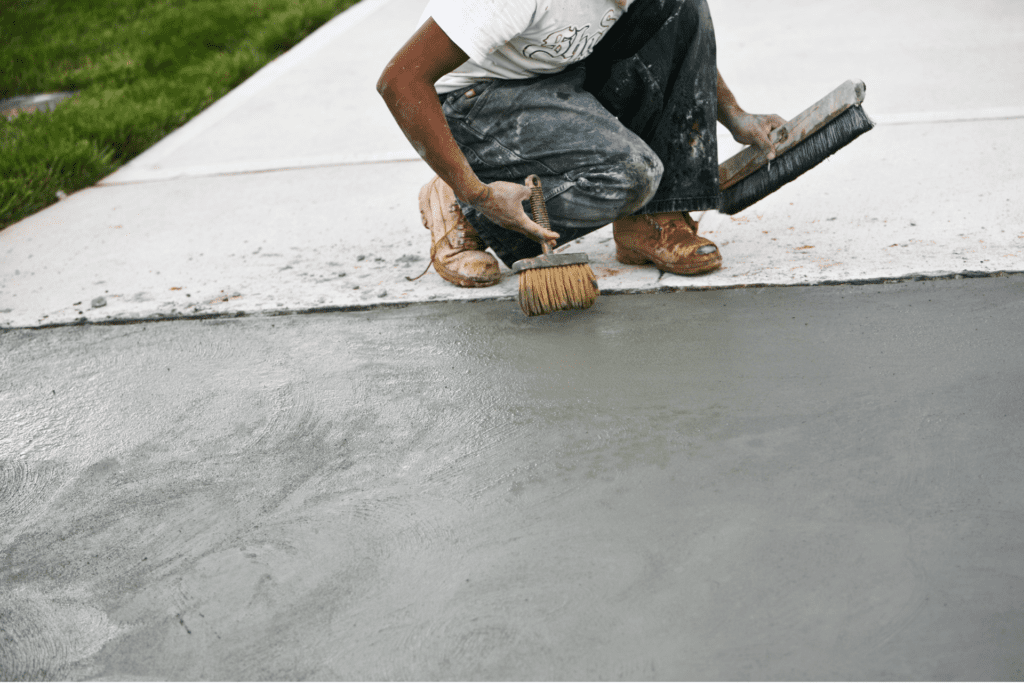
How To Ensure Your Driveway Project Meets Council Approval
When embarking on a driveway project, getting council approval is essential to avoid legal issues and ensure everything is up to code. Here’s how you can ensure your project meets your local council’s requirements.
Do Your Research
Before diving into your driveway project, it’s crucial to familiarize yourself with the specific guidelines set by your local council. These regulations can vary across different regions in New Zealand, so you want to make sure your project adheres to the standards in your area. A great starting point is your council’s website, which typically has all the information you need, including regulations on materials, dimensions, and drainage systems.
For example, some councils may require specific setback distances from the road, while others might have strict rules on the type of materials used. By understanding these rules upfront, you’ll save time and avoid costly mistakes down the road. As a general rule, always keep an eye on zoning restrictions and property lines.
Hire a Professional
Navigating the maze of local council regulations can be overwhelming, especially if you’re new to property development or construction. This is why it’s highly advisable to hire a professional whether it be a contractor, engineer, or designer who is experienced with council rules and requirements. A skilled professional not only helps you design a driveway that complements your property but also ensures that all legal aspects are covered.
Working with an expert significantly reduces the chances of your project being delayed due to non-compliance issues. Plus, professionals often have a strong working relationship with local councils, which can streamline the approval process. This makes the overall project smoother, quicker, and less stressful for you.
Final Inspection and Approval
Once your driveway is constructed, the journey isn’t quite over yet. Many councils in New Zealand require a final inspection to ensure the newly-built driveway meets all the necessary safety and design standards. This inspection is crucial because it guarantees that the driveway is not only functional but also safe for both you and the community. During this inspection, the council will typically check aspects such as the slope of the driveway, drainage, and whether it meets setback requirements. Once everything is approved, you can rest easy knowing your driveway is fully compliant, giving you peace of mind for years to come. Ensuring your driveway project meets council approval in New Zealand is a three-step process: research, professional help, and a final inspection. By following these steps, you’ll avoid headaches and ensure your project runs smoothly from start to finish. Always remember that taking the time to understand local regulations and hiring the right people can make all the difference in your project’s success.

FAQs: About Council Rules Driveways NZ
Do I need council approval for a new driveway in New Zealand?
Yes, in most cases, you will need council approval for constructing a new driveway or making significant modifications to an existing one. Councils regulate driveway placement, design, and materials to ensure safety and proper infrastructure management. It’s important to check with your local council for specific permit requirements.
What are the typical driveway width regulations in New Zealand?
The standard width for residential driveways in New Zealand ranges between 2.5 to 5.5 meters, depending on the number of vehicles the driveway will accommodate. For commercial properties, the required width may be wider. Always check your local council’s regulations to ensure compliance with the specific width standards.
How close can my driveway be to the boundary or an intersection?
Driveway placement must adhere to council guidelines regarding boundaries and intersections. Generally, driveways must be set back a certain distance from intersections to avoid traffic hazards and provide clear visibility. This distance varies by region, so it’s best to consult your local council’s guidelines.
What materials are commonly used for driveways in New Zealand, and are there any restrictions?
Common materials for driveways in New Zealand include concrete, asphalt, pavers, and gravel. Councils may have restrictions on certain materials, especially regarding drainage and environmental impact. For instance, porous materials may be encouraged to reduce water runoff, while impermeable surfaces like asphalt might require additional drainage solutions.
Do I need to manage stormwater drainage for my driveway?
Yes, proper drainage is a key requirement for driveway construction. Most councils require you to manage stormwater runoff to ensure it doesn’t flow onto public roads, neighboring properties, or cause flooding issues. Drainage solutions like soak pits or channel drains may be necessary to comply with council regulations.
What happens if I build a driveway without council approval?
Building a driveway without the necessary council approvals can result in fines or legal action. In some cases, you may be required to modify or completely remove the driveway at your own expense if it doesn’t meet local regulations. Always secure the proper permits before starting any construction.
Can I modify an existing driveway without council approval?
Minor repairs or resurfacing of an existing driveway may not require council approval, but significant modifications such as changing the location, expanding the width, or altering the material often do. Contact your local council to confirm whether a permit is required for your specific project.
Are there special rules for shared driveways in New Zealand?
Yes, shared driveways common in multi-unit properties or urban areas are subject to specific council regulations. These include rules about access rights, maintenance responsibilities, and minimum width. It’s essential to have a clear agreement with all parties sharing the driveway and to comply with council standards for safety and access.
How long does it take to get council approval for a driveway permit?
The time it takes to get council approval for a driveway permit can vary by region and the complexity of your project. On average, the process can take anywhere from a few days to several weeks. Submitting accurate documentation and meeting all council requirements can help speed up the process.
Do councils inspect driveways after construction?
Yes, many councils conduct inspections after driveway construction to ensure that it meets local regulations and safety standards. An inspector will check the driveway’s placement, materials, and drainage setup. Final approval may be required before the driveway can be officially used.
Conclusion
When it comes to building or modifying a driveway in New Zealand, it’s crucial to follow the proper procedures and adhere to local council regulations to ensure your project is both functional and compliant. We’ve highlighted the key steps, including obtaining the necessary permits, understanding local guidelines, and ensuring your design meets safety and accessibility standards. These measures are essential not only for the durability and usability of your driveway but also for securing council approval. While the process may seem daunting at first, it is entirely manageable with the right preparation and research. Taking the time to familiarize yourself with the specific rules in your area and consulting with professionals or your local council can save you from potential setbacks down the road. Now is the perfect time to start planning your project by checking local regulations, obtaining the necessary approvals, and ensuring you follow the right steps, so you can move forward confidently. Building a driveway that aligns with New Zealand’s council requirements is not only achievable but can be a smooth process when approached with the right knowledge. Ultimately, this effort will result in a driveway that not only enhances your property’s curb appeal but also provides peace of mind, knowing it meets all safety and legal standards. With proper planning, you can have a driveway that looks great and complies with all council rules.
About the Author:
Mike Veail is a recognized digital marketing expert with over 6 years of experience in helping tradespeople and small businesses thrive online. A former quantity surveyor, Mike combines deep industry knowledge with hands-on expertise in SEO and Google Ads. His marketing strategies are tailored to the specific needs of the trades sector, helping businesses increase visibility and generate more leads through proven, ethical methods.
Mike has successfully partnered with numerous companies, establishing a track record of delivering measurable results. His work has been featured across various platforms that showcase his expertise in lead generation and online marketing for the trades sector.
Learn more about Mike's experience and services at https://theleadguy.online or follow him on social media:


